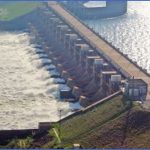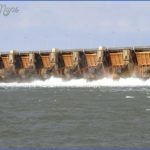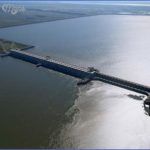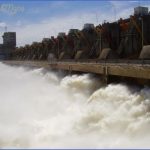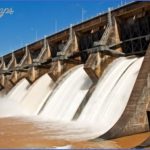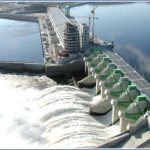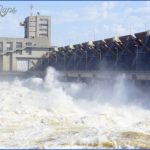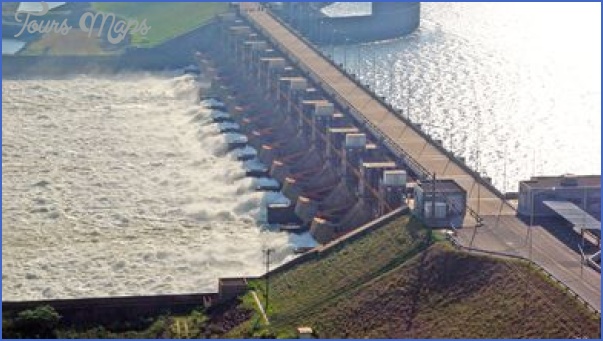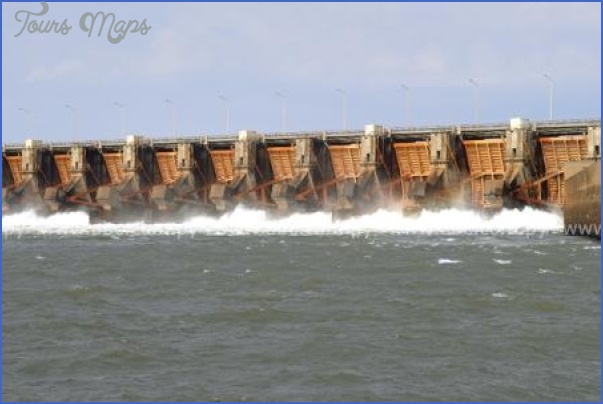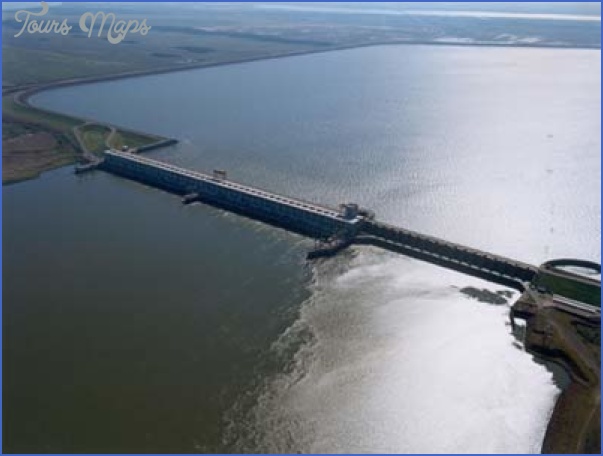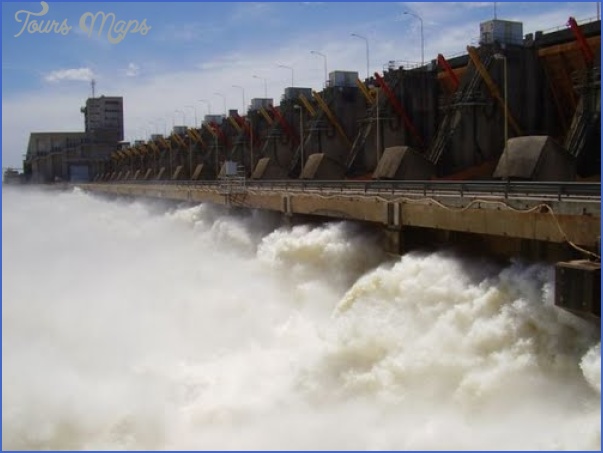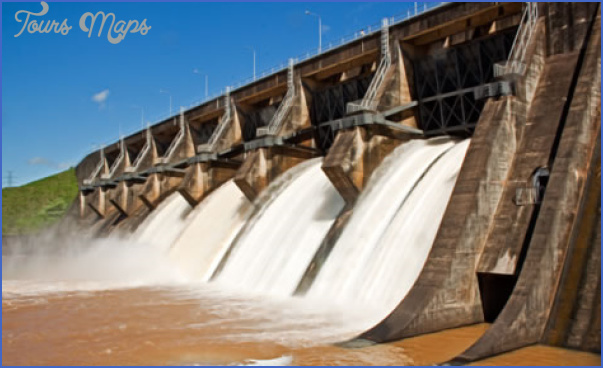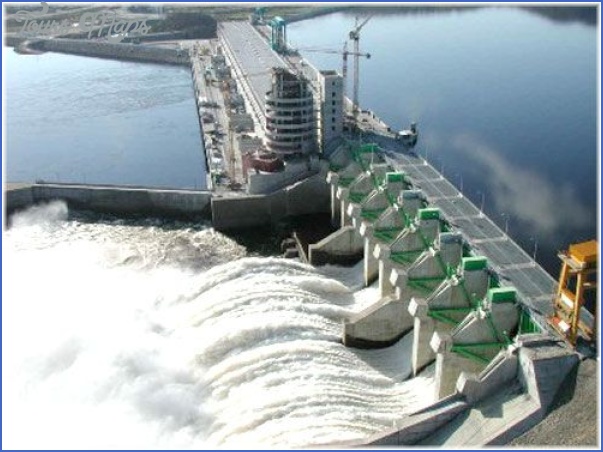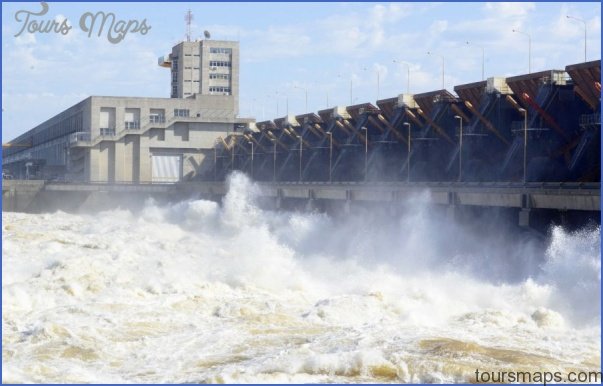The Yacyreta hydroelectric plant’s history began in the 1920’s when studies were done seeking to improve navigation on the notoriously rapid Parana River. In the 1950’s Paraguay and Argentina began working together to study the possibility of harnessing the power of the river to create electricity and in 1973 the Tratado de Yacyreta (Treaty of Yacyreta) was signed between the two countries. With that came the creation of the Entidad Binacional Yacyreta (EBY for short) through which both nations jointly administer the dam.
Yacyreta’s construction, which began in 1983, came at a high environmental cost to southern Paraguay. The creation of the 808-meter long dam resulted in the flooding of 90 percent of the Isla Yacyreta (Yacyreta Island) located in the middle of the Parana River and the complete flooding of Encarnacion’s lower Zona Baja region (see Flooded Out). Though the EBY created the Reserva Faunistico Atinguy wildlife refuge for animals displaced by the flooding, countless creatures, many of them already endangered, lost their natural habitat. In addition the damming of the river has resulted in the severe depletion of dorado fish; the fish elevator constructed within the dam has not been effective enough at aiding the fish to migrate upriver.
Today twenty turbines are in use generating approximately 19,000 kilowatt hours per year – almost a third of what Itaipu generates. Paraguay receives half of the electricity produced, although due to the country’s relatively low energy needs, about 80 percent of this is then sold back to Argentina. There are plans to install another series of turbines along the Ana Kua bridge which leads from Ayolas to the dam on the Isla Yacyreta. This is projected to increase the dam’s generating capacity to
20,000 kilowatt hours per year.
Much like Itaipu the EBY generates a significant amount of money and as such is a constant source of newspaper headlines decrying corruption. Misuse of EBY funds is rampant and there have been several scandals involving the relocation allowances provided for people who live within the flood zone (see Flooded Out). The construction cost of the dam itself was originally estimated at US $ 2.5 million but to this date totals over US$ 11.5 million. Argentine President Carlos Menem even went on record stating that Yacyreta was a monument to corruption.
Free tours of the damn are offered daily and last about an hour. The tour begins with a Spanish language video about the dam’s construction before visitors are loaded onto a bus which crosses the Ana Kua bridge to the Isla Yacyreta. There the tour passes through the impressive turbine hall before crossing the dam’s retaining wall and stopping at the water lock. The Yacyreta complex also includes a museum with indigenous artifacts found during the construction of the dam and an extensive (but poorly preserved) collection of stuffed birds, mammals and insects from the flood area. Visitors must sign in with their name, nationality and passport number at least half an hour before the tour either by phone or in person (which leaves enough time for a quick visit to the museum before the tour starts). Although transportation is not provided, it is also possible to visit the Reserva Faunistico Atinguy (see following section), and, with special permission, some remaining unflooded areas of Isla Yacyreta. Tel: 072 222 276, 021 445 055, www.eby.gov.py, tour hours 8:30am, 10am, 2pm, Museum hours 7am-12pm, 1pm-4pm Sidebar: In Guarani yacyreta has two potential meanings: land where the moon is born and land of difficult waters.
Central Hidroelectrica Yacyreta Paraguay Photo Gallery
Maybe You Like Them Too
- The Best Cities To Visit in The World
- World’s 10 Best Places To Visit
- Coolest Countries in the World to Visit
- Travel to Santorini, Greece
- Map of Barbados – Holiday in Barbados

